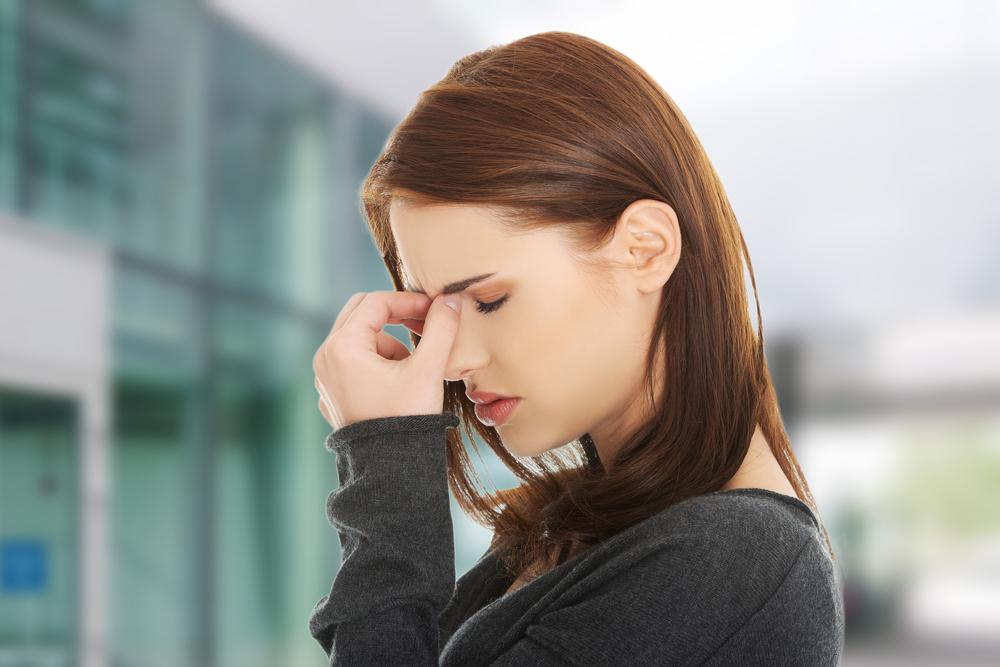Everything You Need To Know About Sinus Pain
Everything you need to know about sinus pain
Sinus pain or other sinus problems occur when the sinuses (the hollow air spaces within the bones between your eyes, cheekbones, and forehead) get blocked. As a result, an individual suffers from pain around his/her forehead, cheeks, nose, and eyes. The pain worsens upon touch or when the head is held down. Usually, a sinus treatment for the pain caused by colds is not required, as the pain goes away when the cold symptoms subside.

Read further to find out more about sinusitis pain, natural remedies for pain in sinuses, and more.
What are the symptoms of sinusitis?
Sinusitis may be caused by an infection, an allergen, or chemical or particulate irritation of the sinuses. Sinus infection is rarely contagious. Some of the common symptoms of sinusitis are:
- Facial tenderness
- Pain and/or pressure in the sinuses (in ears and teeth)
- Cloudy discolored nasal or post nasal drainage
- Blocked nose
- Reduced sense of smell
- A sore throat
- Congestion
- Occasional facial swelling
- A cough
- Fever
- Halitosis (foul-smelling breath)
- Tiredness
- A sinus headache
Which sinuses are causing the sinus pain?
There are four types of sinuses, depending on the location one can know which one is causing the pain. They are as follows:
- Frontal sinus – Sinuses located in the forehead. These cause headaches and pain in the forehead
- Maxillary sinus- Maxillary sinuses are located in the cheeks and upper jaw/teeth region. Blockage in this sinus causes pain in the cheeks and upper jaw/teeth
- Ethmoid sinus- Located between the eyes, trouble in this sinus results in pain between the eyes or across the nose
- Sphenoid sinus- Blockage in this sinus leads to pain on the top of the scalp, at the back of the head, and behind the eyes
How to relieve sinus pain?
- Saline nose spray- Sinus pain can be managed without any professional sinus treatment by using a saline nose spray. Saline mist eases sinus swelling, which in turn provides sinus congestion relief. Depending on the severity of the sinus problem, one can use the spray up to six times a day.
- Use a humidifier- This is one of the best sinus drainage treatments , which can easily be carried out at home. Use a humidifier, especially at night, and see how effectively it keeps the sinuses open. One can also sit in a steamy bathroom while inhaling the steam or breathe in steam from a pan to release the pressure or sinus pain.
- Warm compress- A warm compress serves as an easy yet extremely effective sinus treatment. One has to only apply a warm and wet washcloth on the cheeks, forehead, and eyes to get rid of the swelling and pain.
- Decongestant nose spray- Available as a nasal spray, pill, or in a liquid form, these decongestants serve as the best sinus allergy relief medicines. However, they are not to be used for a prolonged period of time.
- Pain relief medicines- Pain relief medicines can help reduce the inflammation and in turn, ease the pain in the sinuses.
What are the home remedies for sinus pain?
- Resting- Ample rest helps the body to heal and produce more white blood cells that attack viruses and bacteria. A good night’s sleep makes the brain release hormones that encourage tissue growth.
- Stay hydrated- The easiest thing one can do to relieve sinus pressure at home is to keep the body well hydrated. The fluids serve as effective home remedies for sinus drainage . They make the mucus thin and eliminate inflammation in the sinuses.
- Consume beneficial foods – One can consume cayenne pepper that boasts anti-inflammatory and anti-bacterial properties. Horseradish is another spice that can help to break up and drain out the congested mucus.
- Apple cider vinegar- Apple cider vinegar has many health benefits, including the positive impact that it leaves on the sinuses. Drinking a cup of hot water mixed with two or three tablespoons of apple cider vinegar thrice a day can get relieve sinus pain.
- Nasal irrigation- This home remedy can effectively reduce nasal congestion and irritation. It is a procedure of flushing out the nasal passage gently with a saline solution.
When to visit the doctor?
One needs to visit a doctor in case:
- Sinusitis does not improve after 2 days of treatment at home.
- There is a pain in the upper teeth and in the face.
- There is a pain extending from the bridge of the nose to the lower eyelid.
- A headache which isn’t reducing with the help of over-the-counter pain relievers.
- A fever with a temperature of 101℉ or higher.
- Discolored nasal discharge (yellowish or greenish in color).
- Symptoms of cold that last for more than 10 days or worsen after seven days.
- Chronic or mild facial pain.
- No relief from sinus pain after three days of antibiotic treatment.




